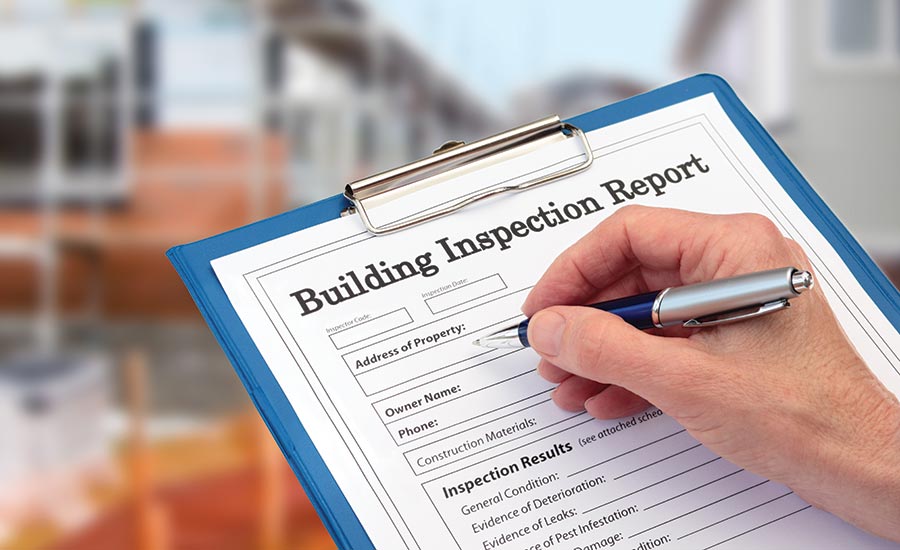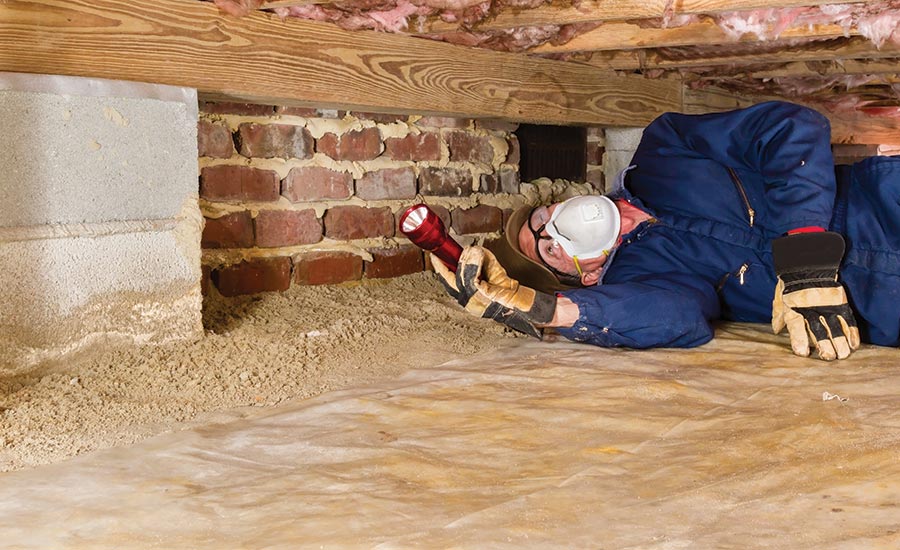The Evolution of Stable Sales Revenue
Changing reactive sales into proactive, recurring sales.

Two years ago, I wrote an article for R&R Magazine entitled “Capturing Stable Sales Revenue in 2017.” The basics of the article were:
- The R&R industry suffers from extreme sales/cash flow ups and downs.
- Other industries have successfully overcome this issue.
- The R&R industry can do it too.
Two years later, and nearly a decade into this concept, this article is all about what we’ve learned on enhancing and even overhauling a restoration company for not only greater sales, but also recurring and residual sales.
Over the last two years, I’ve focused on 25 companies. The companies ranged in size from around $250,000 to nearly $30 million in annual sales, and everything in between. As you might expect, some companies worked with me daily, weekly, and monthly to test and perfect ideas while some companies simply fell back into old habits and never adopted what we’re going to discuss in this article.
Instead of only bringing you my perspective on things, I thought it would be interesting to write an article from three perspectives. My perspective is from someone in the trenches of developing a system meant to help grow and sustain contracting businesses. However Jonathan Porter of AdvantaClean of Metro New Orleans and Pete Pantazopolous of Sunshine Cleaning & Restoration in Payson, Ariz., are also contributing to this article as your peers (which may be a more important perspective).
A Little Background
Jonathan and I (Mark) have been working together in the Greater New Orleans area with relationships inclusive of real estate, home inspection, mold assessment, and insurance to cultivate both lead generation and professional affiliation which we’ll touch on later in the article. Simultaneously, we’ve worked together to test and understand how customers should be educated and how tools like insurance-backed warranties can be used to leverage sales.
The primary industry that Pete services is construction. In other words, when builders have mold issues (moisture issues), he solves their problem. Now I know what most of you are going to say (remember I’ve been working on this for a decade): “Builders don’t want to pay anything for remediation” and “You can’t trust builders. As soon as they see what you’re doing, they’ll figure out a way to get it done themselves for less” or “builders just want me to spray bleach or encapsulate it so that they can get the property sold.”
Here’s what I’ve got to say about that: You’re right. If you don’t have a specific strategy for working with builders and if you don’t understand their core concerns and motivations, then all those objections are 100% accurate.
Point #1 of what we’ve learned over the last two years is: Understand your
customer’s top three problems and prove your system solves them.
Doubling Your Remediation Sales
Whether in dealings with builders or homeowners, the price your customer is willing to pay for your remediation services is directly tied to your region and competition, unless you change the paradigm.
Let me ask you some questions.
- How often in selling remediation services do your customers ask you for a warranty?
- What do you tell them? Do you explain, as many do, that the only warranty you’re willing to make is that their property is in pre-loss status on the day you complete the remediation?
- Are you one of the risk-takers who establishes a warranty backed by the assets of your company alone?
- Are you getting paid more for the value you’re adding to the sale or are you only increasing your costs?
- How are you ensuring the good will you’re trying to provide to your customer doesn’t result in your financial loss?
These are questions we’ve been working through for the last decade and here’s what we know.
First, you need to be in control of your assets and liabilities. Don’t ever let the tail wag the dog. The reason you probably don’t currently offer a warranty with you remediation services is because you can’t control what happens in the building after you leave, right? The first step in giving your customers what they want (a warranty) is educating them and providing the necessary control services to offset any potential liability. We simply call these control services after remediation “moisture controls.” Moisture controls are everything necessary to ensure condensation, wicking, moisture release, repeated dew point cycles, puddling, and even thermal bridging are mitigated prior to warranty.
The education sequence with a customer can be as simple as this: “Mr. and/or Mrs. Customer, I understand you want a warranty on our remediation services; however, if we don’t change the environment that created the issues in the first place, we can’t offer you a warranty. Would you like to learn about how our engineered moisture controls can qualify you for our warranty program?”
By educating your customers on the facts, you not only separate yourself from the competition, you also increase the customer’s confidence in your ability to deliver superior services while doubling your sales volumes at the same time.
Some customers applying this technique consistently have seen average sales rise from $4,000 to over $9,000 in a few short months. The sale of moisture controls in your remediation business is the key to increasing your average sale and is also the leverage you have in controlling your assets and liabilities
Point #2 of what we’ve learned over the last two years is:
Never give a warranty without establishing reasonable controls first.
It All Begins with Inspection
The first step to establish controls is with a property inspection. From the outside to the inside of the property, you need to be knowledgeable about any “conducive conditions” that are or could be a problem for your customer. The inspection not only sets you up for success but oftentimes, it will educate both you and the customer on where other fixes are needed. The inspection is the most important part of the process and directly tied to your ability to transfer your company from reactive to proactive sales quickly.

As you can probably tell, we focus on good customer education and nothing sells better or faster than the truth. Tell your customers the unadulterated truth and they’ll be customers for life. Speaking of customers for life, the other important thing about the initial inspection is that it sets you up for all future annual inspections. By re-inspecting the property once per year, not only are you helping your customers prevent future risks associated with moisture, you’re also there to suggest maintenance needs, control system upgrades, and if/when emergency services are necessary, you have the pole position. And before you have to ask, yes, the annual inspections are paid for as part of an overall warranty system which we’ll touch on next.
Point #3 of what we’ve learned over the last two years is: If you want to build recurring
income into your company, begin with annual inspection contracts.
Types of Warranties
Retreat vs. Repair Warranties
Warranties come in several forms: retreat warranties and repair warranties. Retreat warranties only pay to “re-treat” a space or a property if there’s ever a claim. Repair warranties cover damage, build back, and retreatment on claims. It’s an important distinction and one that not only dictates the value your warranty but also its price. In our experience, repair warranties carry about twice the contact value of retreat warranties and create as much as three times the profit (typically 80 to 85 percent net margins).
Partial vs. Complete Structure Warranties

Another warranty distinction is partial vs. complete structure. A partial warranty typically only covers areas where remediation and/or control work was performed. A complete warranty covers the entire structure. On the surface, the partial warranty may seem like the smart way to go, but when you consider pairing warranty and annual inspection together, a complete warranty may be a better choice. In our experience, a complete warranty paired with a complete inspection of a property provides the most value to the property owner, the highest closing rates on both work and warranties sales, and the highest ongoing renewal rates (87 to 93 percent is typical).
Self-Insured vs. Insurance-Backed Warranties
Self-insured warranties vs. insurance-backed warranties are another important consideration. In one of our early training sessions, our insurance underwriter came into the class to walk everyone through things and establish credibility for the system. Everything was going great and then he said something like: “Don’t increase your liability by financing your warranty.” For some reason it hit me like a ton of bricks that beyond everything else we were working on, we also established a system that intentionally helped our customers eliminate liability in their own businesses. Not only does an insurance-backed warranty system eliminate the financial liability of a claim, but if the worst were ever to occur and you ended up in court, a good warranty endorsement also provides for legal protection and other protections you may not immediately consider.
An insurance-backed warranty also lends itself to additional partnership opportunities. There are complimentary service companies you already work with who could enjoy the benefits of a value-add opportunity with your company which would generate thousands of qualified opportunities every year in your region. We probably don’t have enough space in this article to discuss affliates and working with real estate companies, insurers, home inspectors, mold assessors, builders, and others, but know that a good warranty system can be the tool you’ve been looking for to create the partnerships and market penetration you’ve always wanted.
Point #4 of what we’ve learned over the last two years is: Structure your warranty system based
on the demands of the market and prevent unintended warranty liability by financing the risk through insurance.
Cultivating Ongoing Customer Pays Off
When designed properly, a warranty renewal system not only generates stable and ongoing sales for your business, it also reduces the total cost of ownership for your customers by prioritizing budgeted and known maintenance over surprise costs and emergencies. Put yourself in your customer’s shoes. How would like to have a dependable and trustworthy contractor who inspects your home or business every year, educates you on steps to prevent against expensive problems, suggests budgeted ways to maintain a trouble-free structure from year to year, performs the services that keep your property functioning optimally, and offers an insurance-backed warranty to boot? Our experience is that it’s exactly what your customers not only want, but need.
If 2017 and 2018 were the years of learning, adjustment, and preparation, 2019 is the year the R&R industry begins to change forever. By connecting initial and ongoing inspections with control, maintenance and emergency services as an organized and cyclical system, you can build a more valuable business and enjoy predictable and stable, high profit sales from year to year. And when the day comes to sell or pass your company onto the next generation, the reward of focusing and taking the time to implement and foster recurring warranty contracts and thereby service, will help secure your financial future.
Point #5 of what we’ve learned over the last two years is:
Build a system with the best intention of your customers in mind.
It’s cliché to say, “No one cares how much you know until they know how much you care.” But it’s true. Through a relentless focus on excellence, your customers will intuitively understand your commitment to protecting their greatest financial investment and they will remain loyal to you.
Working with Builders
By Pete Pantazapolous
It’s true: working with builders can be challenging, complicated, a little tricky, and time sensitive. It can also be extremely rewarding. Builders face many challenges during the course of new construction, which afford remediation service companies the opportunity to help them along the way.
It’s also true builders are driven by the bottom line, and often times, when it comes to damage caused by moisture, they do not want to spend the money and/or the time it takes to do the job correctly. All I can say to them is, “If you don’t want it done right, you need to call someone else and move on.”
There are a lot of builders out there who understand they need a reputable company that can respond professionally, is competitively priced, and can handle problems when they arise. One that takes a non-biased view and can act as a layer of protection whether reactive or proactive in nature for their clients.
CONTRIBUTORS:
Mark Maier | VP of Marketing & Sales | Paradigm Labs
Pete Pantazalolous | Founder | Sunshine Cleaning & Restoration
Jonathan Porter | Partner | AdvantaClean of Metro New Orlean
Here are a few challenges you will face in new construction. From a remediation stand point, having control of the environment is crucial to a successful outcome. It seems putting up a sign that reads “DANGER KEEP OUT, REMEDIATION IN PROGRESS,” written in many different languages must be a subliminal code for “this applies to everyone but me.” With so many trades, employees, and contractors in the mix, it can be arduous at times. Servicing builders can also be a little tricky. You might find yourself working for you clients’ client and beyond. You could be answering to the field rep that hired you, his boss, and his boss’ boss. The fun really starts when you’re asked to walk the potential buyer off the ledge, explain the process, and what must take place to satisfy their concerns.
Often times I find myself in a position of being the remediator, teacher, chemist, attorney, psychiatrist, and so on. However, it’s these experiences that brought me to the realization that I needed help. I needed the right chemistry and a manufacturer that would answer my calls when I had questions about their products. I also needed a proven system that would define processes and document results, a system that would reduce my liability and my customer’s liability. One that would offer constant protection to a structure and offer my business recurring sales as well as build real value in my company. I find it extremely satisfying to help my clients complete their projects and turn over the keys to the new home buyer knowing they put their faith in me and I delivered.
Customer Confidence & Closing the Deal
By Jonathan Porter
I am a partner in and operate a remediation and restoration business in New Orleans, Louisiana. We help regional customers with water damage, fire damage, and duct cleaning projects, but our primary business historically has centered on mold and, more recently, moisture controls. One problem we have faced over the years is how to bring added value to mold customers, either to separate from the pack in multiple-bid situations, or close deals when a customer is on the fence.
I am a partner in and operate a remediation and restoration business in New Orleans, Louisiana. We help regional customers with water damage, fire damage, and duct cleaning projects, but our primary business historically has centered on mold and, more recently, moisture controls. One problem we have faced over the years is how to bring added value to mold customers, either to separate from the pack in multiple-bid situations, or close deals when a customer is on the fence.
Overcoming Price
The scope of work to both remediate a home and install engineered moisture controls can be extensive and potentially costly to produce. A real warranty can give homeowners enough confidence in the solution to move forward with costly projects.
In one mold project in a 1920’s, 2,200 square foot home, an independent mold consultant specified a full-gut of the property due to damage resulting from an improper spray foam insulation retro-fit. Three remediation companies were brought in for proposals; all three companies recommended some amount of remediation or sanitizing. We proposed remediation per the mold consultant’s protocol, plus engineered moisture controls and a renewable, transferrable warranty. After consulting with the customer, we were awarded the contract, even though our bid price, at around $61,000, was nearly double the next-highest bid. When asked, the customer referenced our focus on a permanent solution and the warranty as key factors in their decision.
Confidence to Get Off the Fence

Another project aided by renewable warranty involved a home owned by a family trust overseen by a bank representative. The home suffered from a systemic moisture-intrusion and mold problem caused by multiple issues, including an improperly-sized HVAC system, leaky ducts, poorly-installed insulation, you name it. Over the course of about a year, the trustee called in mechanical engineers, mold consultants, several general contractors, and remediators. No fewer than four proposals were entertained and the trustee was deadlocked.
During this period of indecision, our company began offering our warranty product. We contacted the trustee to inform him about our new program and won the contract within two weeks. Our ability and willingness to place the property under warranty gave the trustee the confidence he needed to move forward with our recommended plan.
Saving a Sale
The last example involves a remediation project related to a real estate transaction. A mold consultant we do business with recommended we take a look at the home that was under contract. The consultant’s air quality testing revealed Stachybotrys spore-counts upwards of five figures in part of the home. As a result, the buyer was ready to walk away from the sale. The seller was in a bind and needed a solution.
The last example involves a remediation project related to a real estate transaction. A mold consultant we do business with recommended we take a look at the home that was under contract. The consultant’s air quality testing revealed Stachybotrys spore-counts upwards of five figures in part of the home. As a result, the buyer was ready to walk away from the sale. The seller was in a bind and needed a solution.
As we cross the six-month mark of offering our renewable, transferrable warranty, it has become clear that while we still have a great deal to learn about how best to leverage this new tool, we have found a way to close better deals today and create recurring revenue in the future.
Looking for a reprint of this article?
From high-res PDFs to custom plaques, order your copy today!






